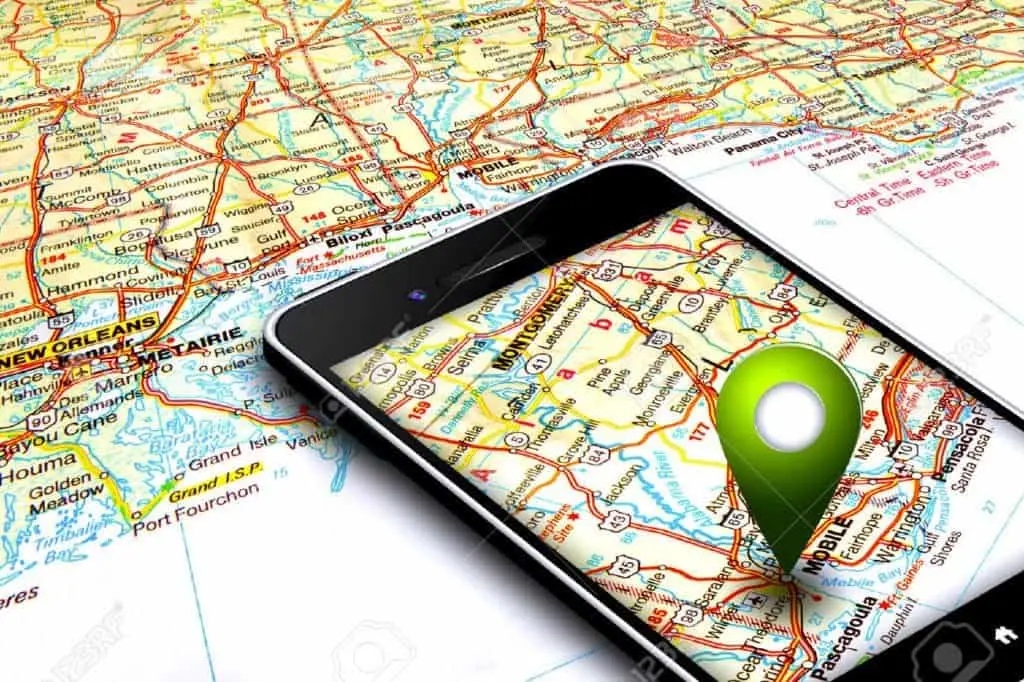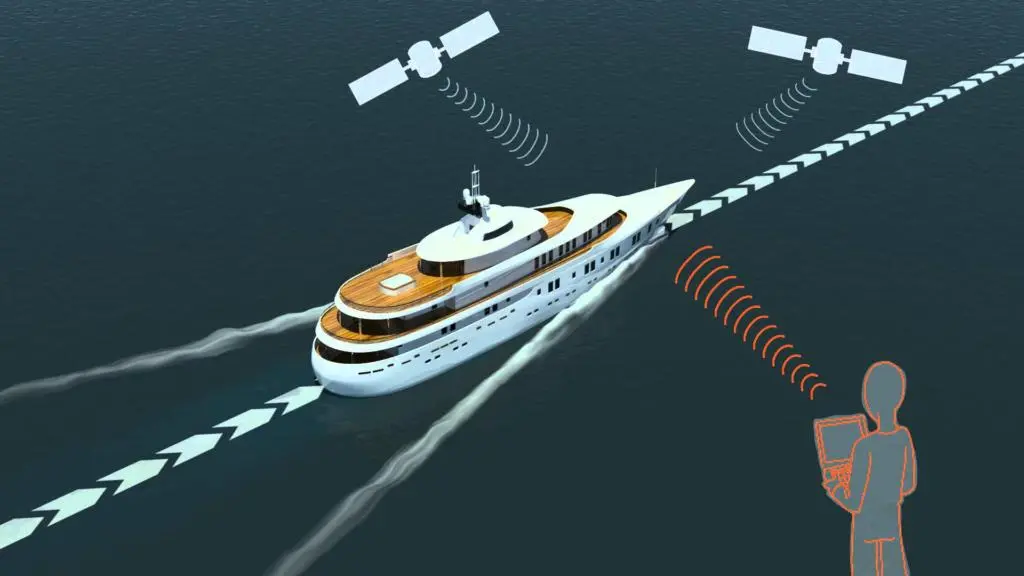GPS Spoofing – What Is It and How Does It Work
10 min. read
Updated on
Read our disclosure page to find out how can you help VPNCentral sustain the editorial team Read more

With the development of technology, we’ve come to largely depend on location tracking in real-time. Knowing where something or someone is at any point in time is not only a privilege but has actually become a necessity.
We use location tracking and GPS systems for operating vehicles like cars, planes, and boats. We use them to find our way even when we walk on foot.
There are many different map apps that you can use on your phone or similar devices to find your exact location and see what is near you. We even use it for games, like the popular Pokemon Go.
And let’s not forget about our IP addresses that also show our exact location.
When it comes to location tracking precision is important. So what if this sort of information could be altered? What would happen if we could trick the apps that are noting our location, and make them think that we were somewhere else?
Well, this is not only possible but actually very easy to do. This process is called GPS spoofing, and if you just keep reading, we will explore how you can do it, as well as what are the potential consequences of doing it.
What is GPS spoofing and what does it do?
Well, as we already mentioned, GPS spoofing is the process of changing some of the data that you emit. Specifically, the data concerning your location, speed, as well as accuracy.
It is most often seen as an attack, especially when someone uses it in the context of network security. This way of falsifying data is bannable when it comes to many different services, including the game Pokemon Go.

So basically, when you have your location tracked by an app that you use or a GPS device, you actually use a satellite-provided map on which your location is constantly being traced.
Your device sends out a signal that puts you in a certain place on the map. The signal carries your coordinates, which is how the map knows where to put you.
When you use a spoofing app or an entire spoofing device, the information that the map receives from you is wrong. Your coordinates are different from your real location, which puts you in a different place.
It might move you just a bit down the street, or to the other side of the world, it all depends on your own preference. You can even send the signal of your real location but at a different time.
You can do all of this very easily by simply using one of many GPS spoofing apps.
Which apps to use for GPS spoofing, and how do they work
Using GPS spoofing apps is very easy, and you can even find them on Google Play Store. Their method of operation is relatively simple, and you can modify them however you like.
What they do is mock your location by changing five different variables that API asks for. Those include latitude, longitude, altitude, speed, as well as the accuracy of every device.
With this information, the maps you use to know where to find you and how to track your progress in the world.
The most important of these variables are latitude and longitude, at least when it comes to locating you. The other three provide additional details to your location so that apps that you use would function better, and with more precision.
So, if you start using spoofing apps, they basically change these variables. That means that you are sending different numbers, fake coordinates, and the system puts you in another place.
However, pretty much all of the apps do a pretty sloppy job when it comes to doing it properly.
They mostly change your latitude and longitude, while the rest of the variables remain unchanged, and simply cling to one set of values that never changes. This is not how actual GPS readings work.
Services that you are trying to trick can usually catch you in the act by noticing that these values do not change.
In fact, the only app that actually changes all of the five variables, and therefore provides a decent service, is GPS JoyStick. This is the only app that does the job as it should in the entire Google Play Store.
The app itself has a very special design, and it changes the values of these variables even when you are not moving.
The changes are not big, so you won’t look like you are bouncing around. In fact, they are very tiny, which makes the impression all the more convincing, since that is exactly how real GPS works.
How important is it to present these values realistically?
The answer to this question pretty much depends on what you need the app for, and what you are trying to do with it.
Some apps are much easier to trick because you only need to change longitude and latitude. Some other apps are more difficult to trick, and for those, you will need realistic readings.
The Pokemon Go app is one of the trickier ones. As you probably know, the game became popular extremely fast. The players were required to walk around and catch virtual creatures, as well as hatch the collected eggs and alike.
However, not everyone could do so, because of their busy schedules, responsibilities, and other reasons.
They were still interested in playing the game, and so they used GPS spoofing apps. If the apps didn’t work properly, and instead have fixed values, the company that made the game, Niantic, would catch them and ban them. It has systems that are observing the data that you give away when you start the app.
If it notices that some of the values are not changing, while your location changes dramatically, you can consider yourself caught.
That is why you must not only use the GPS spoofer for changing your location but also think about how you use it. For example, if you live in Los Angeles and want to change your location to New York, you can’t just instantly do it.
Teleportation across the US is not possible, and the security systems know it.
Instead, you must turn off the Pokemon Go app, and change your location to New York about 7 hours later. Only then can you start the game again and not end up caught. And that’s only if you use the app that changes all of the values realistically.
So, as you can see, using an app that changes the values of these variables realistically is extremely important in some situations. And even then, you need to play it smart. If you don’t, you will receive a ban, and all of it would have been for nothing.
Is GPS spoofing different from GPS jamming?
The is yes. GPS spoofers will try to trick the navigation systems and provide false information. Basically, they make it look like you are somewhere you are not.
On the other hand, GPS jammers work in a different way.
You can use them for disrupting tracking systems completely. In fact, they are so disruptive and destructive that they are completely outlawed in the US since 2011.
Using them is illegal, as well as making them and selling them. You can still find one if you are persistent, of course, but doing so would be breaking the law.
GPS spoofers are also messing with the GPS signals, but they are not that destructive. Instead, they only provide some false info about your own location.
Can they be used for criminal purposes?
The answer to this is probably yes, or at least maybe.
There were already incidents of theft of some valuable cargo, despite the fact that there were trackers on it. GPS spoofing devices were suspected of being used in these situations, although there was no actual evidence to support this theory.

Some of the even more concerning incidents where GPS spoofers were suspected of being used include foreign governments.
For example, an Iranian engineer stated in 2011 that the Iranian government managed to take a US military drone. Allegedly, they did it through the use of GPS spoofers.
Experts claim that taking control of a drone is an extremely difficult task. This is due to their strong defense systems. Still, it might still be possible, and in 2012 researchers managed to hijack a civilian drone with this method.
Can GPS spoofing give you control of vehicles?
No, hijacking actual controls of any vehicle are not possible through the use of GPS spoofers alone. This method can only give false information, as we discussed earlier.
However, this method can still trick the driver of a vehicle. Providing false information about their environment and position in the world might end up in the change of course or even complete disorientation.
A good example of this is the incident from June 2013.
Back then, a super-yacht worth $80 million got its navigation systems hijacked. The group that took control of the systems successfully sent the yacht on the wrong path. The most concerning part is the fact that nobody on board, not even the captain, noticed that something was wrong.
The systems were lying, and yet, there was not a single alarm.

Fortunately, the group responsible for the hijacking were researchers from the University of Texas at Austin. Their leader was assistant professor Dr. Todd Humphreys, and this was part of a GPS spoofing experiment.
Their goal was to test the homemade GPS spoofer, and its ability to take over the navigation systems without detection.
Back in 2013, the researchers were wondering just how possible it is to do something like this and spoof a marine vessel.
By conducting these tests and experiments, they got their answer, but the results were very concerning. True, the “attackers” only altered the ship’s signal for a few degrees. But that still created an impression that the yacht is off-course.
When the captain adjusted the course so that it would put it on the fake trajectory, that caused the yacht to actually change its course.
This might not seem like a big deal, but it is more than enough to cause an accident, especially in shallow and more dangerous waters. Not to mention the fact that the ship would end up at some completely different location.
Are hackers using this method?
Once again, there is no evidence that anyone actually uses this method on a regular basis for criminal activities. Most of the cases that include GPS spoofing were experiments.
Researchers are often testing what they can or can’t do by using this method. Their goal is also to find different ways of preventing criminal use.
How to increase GPS security?
So far, researchers suggest two different ways of protecting GPS from altering and hijacking.
The one is to increase the strength of the signal that civilian devices are using. This would make it harder for spoofing devices to prevail, but on the other hand, this solution is not very practical.

Another potential way of protecting your device would include applying anti-spoofing algorithms in the GPS receivers. This might not truly prevent the usage of spoofers, but it would at least alert someone in the case of GPS attack.
Wrap up
GPS spoofing is a method that could have some serious consequences in the wrong hands. However, it is not a major concern at this point, at least for the average person.
Still, the opinion is that the increased awareness of this method could help a lot.
This is especially because most people blindly trust technology. Many researchers believe that this has an enormous potential to become a real problem in the near future, and they recommend caution.







User forum
0 messages